Note: This website was automatically translated, so some terms or nuances may not be completely accurate.
Visualizing Student Social Contribution Activities! A New Approach to Solving Social Issues Using Web3 Technology

Yuki Minoda
Panasonic Holdings Corporation

Junichi Suzuki
Dentsu Group Inc.
In recent years, companies have increasingly been questioned about how they engage with society, accelerating initiatives for social contribution, including SDGs. Meanwhile, public interest in social contribution activities has grown, and platforms have created an environment where individuals can easily provide financial support.
However, there have been cases where the destination and use of donations remain opaque, creating a black box. Additionally, social contribution activities that cannot be measured by monetary value have been difficult to visualize and evaluate.
Against this backdrop, Dentsu Innovation Initiative (DII), the R&D organization of the Dentsu Group, and Panasonic Holdings launched the " Traceability Platform Development Project." This project leverages Web3 technology to promote social contribution actions addressing environmental and human rights issues.
How can Web3 technology promote social contribution activities? What potential does it hold? We asked Panasonic Holdings' Yuki Minoda and DII's Junichi Suzuki.
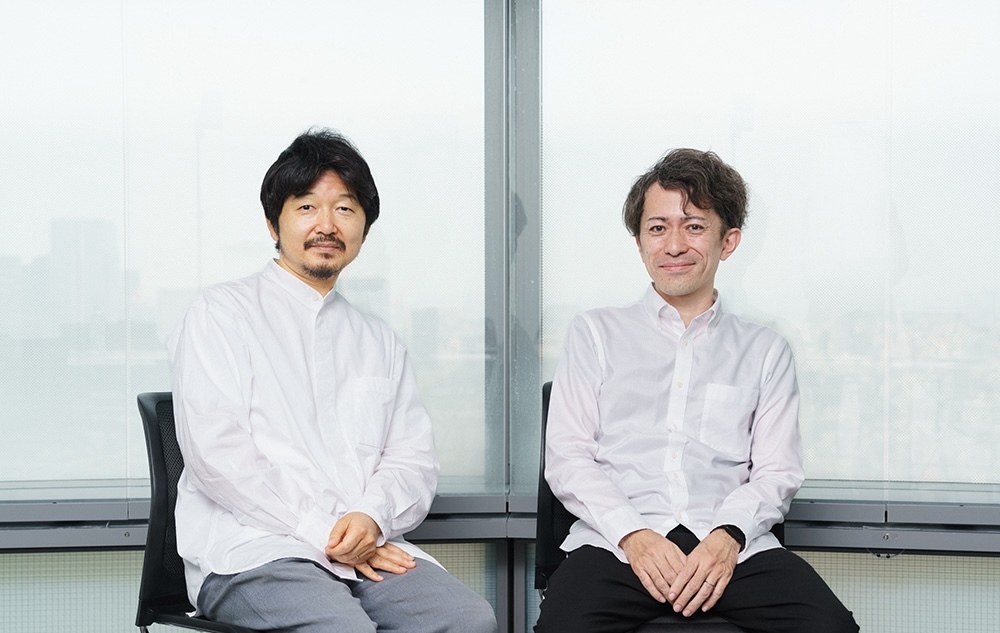
Blockchain technology visualizes donation traceability and "non-positional goods"
──What exactly is the "Traceability Platform to Promote Social Contribution Activities"? Please outline the project.
Suzuki: The broad outline is this: Japanese university students select social issues they care about and create donation portfolios. Investors, primarily Japanese seniors, provide financial support to these students, thereby promoting solutions to the issues they address. Participants in these initiatives, including the students and seniors, receive rewards—including non-monetary ones—from third parties as expressions of empathy and support.
To explain the mechanism further, this platform utilizes blockchain technology. By ensuring strict traceability, it allows detailed tracking of where donations are used and what outcomes they lead to. Additionally, students can tokenize their social contribution activities—a " non-positional good" (something money can't buy)—to leverage it for credit evaluations in job hunting. Investors can communicate with beneficiaries and younger generations through the traceability platform's channels, gaining opportunities for interaction and emotional connections unattainable through traditional monetary support.
──I see. It's clear this initiative offers benefits to students, beneficiaries, and investors alike. I'd like to ask about the specific mechanisms later, but first, could you tell me what prompted you to launch this project?
Suzuki: The initial spark for the concept came from attending a meeting at the UN Headquarters in 2023, held as part of "Climate Week," one of the world's largest climate change events. During discussions about the most critical global human rights challenges at this meeting, the issue that garnered the most support was " the gender education gap in the Indian region."
In India, the percentage of women entering higher education institutions is extremely low. Underlying this are issues like restricted career choices for women and human trafficking. While international donations are being collected to address these problems, it was revealed that in many cases, the funds are largely consumed by local organizations' personnel costs, significant fees are deducted through multiple layers of intermediaries, or parents end up using the money for living expenses.
The problem of the majority of donations not reaching those who should receive support is not unique to India. However, in India's case, there are also women who have not been given a family register. This combines with the problem of not having the means to prove their identity, creating significant constraints on these women's career development.
──That's a serious problem...
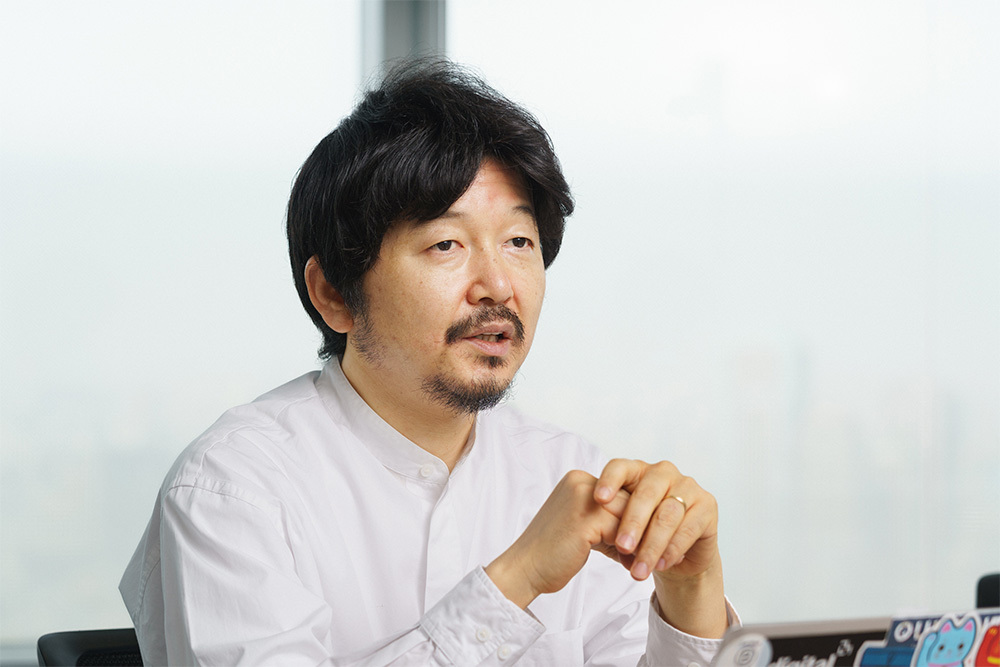
Suzuki: When I heard this story, I thought that leveraging technology—specifically self-sovereign information environments like blockchain technology, known as Web3—which is my area of expertise, might solve this problem. That's when I began sketching out a concept. During this process, I realized the donation issue isn't unique to India. I felt we should build a community for sustainable social contribution not only for human rights issues and educational disparities but also for environmental problems. So, I consulted Mr. Minoda from Panasonic Holdings, whom I'd known for some time.
──What were your impressions of Mr. Suzuki's concept, Mr. Minoda?
Minoda: I felt it perfectly aligned with what we wanted to achieve. At the Panasonic Group, we established our long-term environmental vision, "Panasonic GREEN IMPACT (PGI)," in 2022, aiming to realize a society where "a better life" and "a sustainable global environment" coexist. Specifically, we aim to create an impact reducing CO2 emissions by over 300 million tons by 2050.
However, achieving this goal alone is difficult; co-creation with society and our customers is crucial. We believed the " Sustainable Social Contribution Community " could play a vital role in fostering such collaboration and changing mindsets.
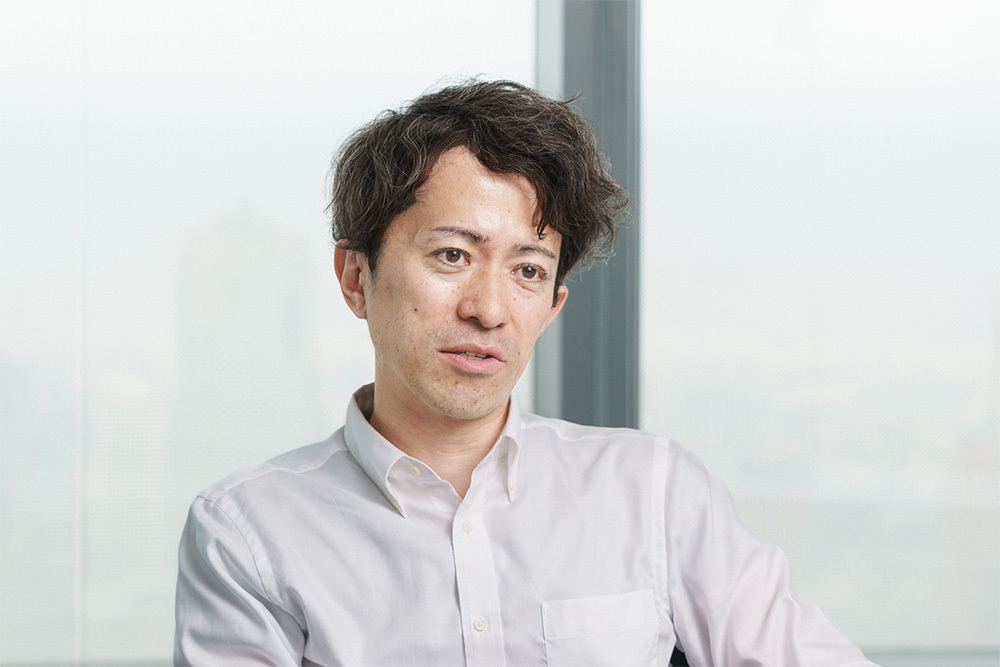
Suzuki: The term "non-positional goods" we discussed earlier emerged from our conversation with Mr. Minoda, right?
Minoda: That's right. For some time, within our company, while pursuing a better future for living, we had been discussing the importance of thoroughly considering values that money cannot buy—such as love, fulfillment, and freedom—in addition to happiness derived from health and the environment.
Incidentally, Panasonic Holdings' technology division formulated its "Technology Future Vision" in July 2024. This outlines our desired future state for 2040—"A society where each person's choices naturally lead to consideration for others"—and the R&D direction to achieve it. Within this vision, it specifically addresses "consideration circulating" within relationships, referring to a state of comfortable physical and mental well-being where consideration flows naturally among people.
Furthermore, true to the words of Panasonic's founder, Konosuke Matsushita, that " a company is a public trust of society," we believe that social contribution is the very mission of a company, and that profit is a reward given by society for contributing to it. I feel this management philosophy also aligns with the concept of non-positional goods.
Suzuki: A classic example of non-positional goods is daily acts of kindness and social contribution activities. I found it interesting that Panasonic expressed this with the phrase "accumulating hidden merits." It's precisely that "hidden" aspect—values and evaluation criteria that haven't really come to the surface until now.
If we can visualize this in the Web3 world using new asset evaluation metrics verifiable by third parties, we might create systems that provide incentives not just to the wealthy or those wearing expensive watches, but to people engaged in social contribution activities or sharing resonant values. This project also aims to establish such a non-positional goods economy.
DII has been advancing the development of an information environment where individuals' daily behavioral achievements can be verifiable through NFTs, through initiatives like J-WAVE's LISTEN+ and Yoichi Ochiai Summer School. For example, since 2019, we have issued graduation certificate NFTs to students who participated in and graduated from Yoichi Ochiai Summer School. Based on this information, we received an offer from a third-party local government in France: they wanted to print thumbnail images of video works created by 20 students participating this year onto the front panels of transformer equipment installed along French roadsides for display.
If realized, this would also mean the students receive artist compensation. Thus, the participating students immediately benefited from the advantages of a Web3-based information environment independent of specific platforms. Such experiences may help some students discover the potential of their own creativity. Moreover, the emergence of a new asset valuation system based on non-status goods highlights the significance of viewing an individual's daily actions as a portfolio—that is, as a collection of NFTs.
Interactions between students, beneficiaries, and seniors foster a sense of fulfillment in giving and lead to sustained support.
──Could you explain the structure of this project again?
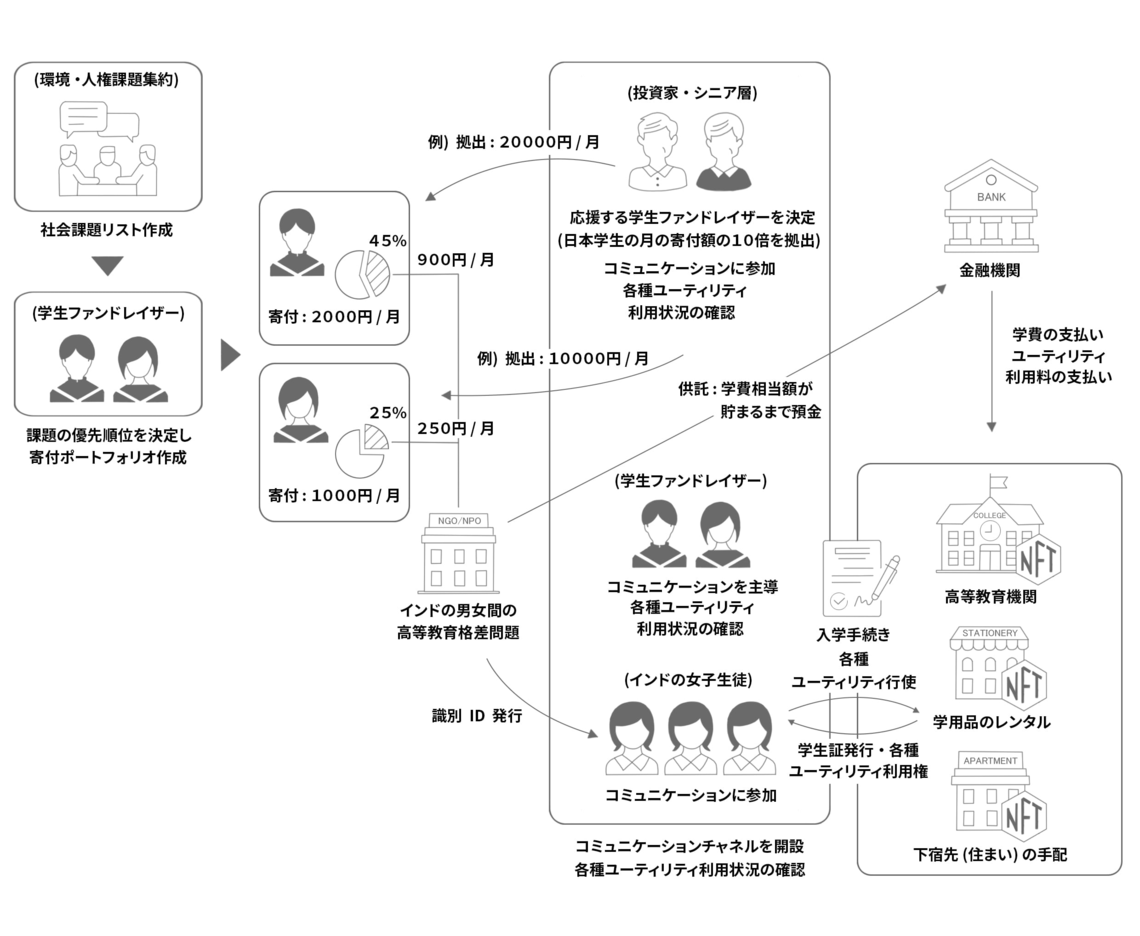
Suzuki: This diagram shows the overall project structure. First, with the cooperation of Fundrex, which specializes in consulting for the social sector, we create a list of social issues where value creation through this project is anticipated.
Next, each student prioritizes issues from the list and creates a portfolio allocating their donation amount. For example, a student who can donate ¥2,000 monthly might allocate 45% (¥900) to India's educational inequality issue and the remaining ¥1,100 to decarbonization, creating a donation portfolio based on their interests. Financial support is then provided by seniors and investors contributing ten times the amount donated by the students.
──Excuse me, why would seniors or investors need to support student donations?
Suzuki: First, to achieve impactful solutions—like enabling Indian women to attend higher education institutions—we believe it's preferable to sustain donations in the tens of thousands of yen range, rather than just a few thousand. Traditional donation models primarily involved financial support through organizations as intermediaries, making direct communication with beneficiaries difficult and creating a barrier to sustainability.
Therefore, this project envisions that seniors whose children or grandchildren have grown up can foster a sense of having a "second grandchild." By continuously interacting with students, they can sustain their support while nurturing affection and a sense of fulfillment. Utilizing a traceability platform enables daily communication between students, beneficiaries, and investors on the channel. We believe providing opportunities to participate in such a cross-generational community serves as an effective non-monetary reward.
──How are donations allocated to beneficiaries?
Suzuki: Donations cover higher education institution application fees, tuition, school supplies, and boarding arrangements. Until the required amount is saved, funds are deposited with a financial institution. Payments are then released from the financial institution to the local organization at specific stages—such as when the beneficiary takes entrance exams or passes and proceeds with enrollment—following a verification process using token authentication technology. By using NFTs with predefined purposes to control the locking and unlocking of deposited funds, the money cannot be used for purposes contrary to the donor's intent.
This strict management of donation usage prevents cases where parents of female students misuse the funds or resell the rights. Furthermore, blockchain technology's smart contracts (automating trusted processing without third-party intermediaries) drastically reduce intermediary costs.
Furthermore, since some women in India may lack official birth certificates, we envision a system where internationally recognized institutions like the UN issue identification IDs, enabling exam registration and enrollment procedures even without birth certificates.
While this primarily addresses India's educational inequality challenge, we plan to develop schemes promoting decarbonization efforts for environmental issues. For example, we could create a system where, even for the same hairdryer product, blockchain technology visualizes which units were produced with lower carbon emissions throughout the supply chain, rewarding users who choose those options.
Minoda: That's right. Regarding the environment, I believe this mechanism can be expanded beyond decarbonization to address related challenges like the circular economy, revitalizing local communities, and nature-positive initiatives.
Suzuki: Also, when we hear "incentives," we often imagine monetary equivalents like gift cards. But it doesn't have to be limited to that. For someone who consciously lives an eco-friendly lifestyle, perhaps "not being asked every time at a cafe if they need a plastic straw" could be their incentive.
By visualizing and analyzing diverse individual values as NFT portfolios, customer loyalty strategies—previously designed around monetary metrics—will likely shift their focus to the values each customer holds dear. Of course, monetary status goods will remain one way to perceive value. However, businesses still lack accumulated insights into what kind of loyalty offers, reward types, and delivery channels they should provide to consumers who have committed to an environmentally conscious lifestyle and whom the company considers important.
Minoda: Non-positional incentives should be abundant in our lives. The values and experiences in life are seamlessly connected—some can be bought with money, others cannot. We tend to focus on what money can buy, but there's a wealth of value around us that money can't purchase. I believe that using technology to make this visible and connecting it with others will lead to the creation of a non-positional goods economy.
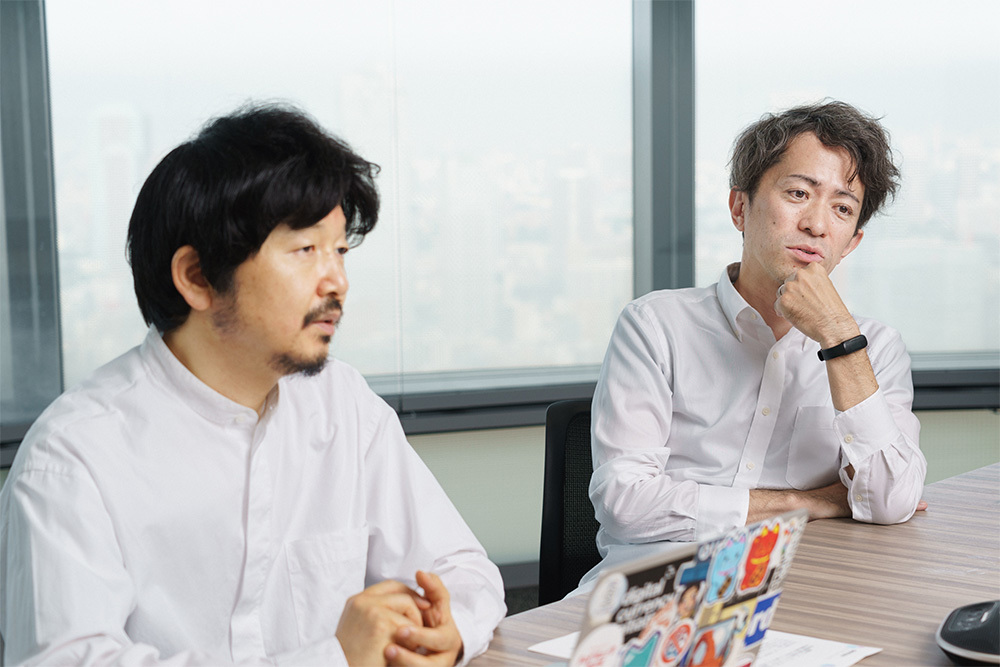
Toward a society embracing diverse forms of wealth beyond material affluence
──This initiative involves not only the Dentsu Group and Panasonic Holdings, but also the companies participating in DII's joint research. What is the thinking and purpose behind welcoming such a diverse range of companies?
Minoda: It boils down to the fact that tackling social issues through collaboration creates greater impact than a single company acting alone. I believe the idea of working together—rather than separately—to solve major societal challenges like decarbonization resonates strongly. That's precisely why actively expanding our partners in this project is essential.
Suzuki: Rather than protecting our own turf, we aim to solve social issues together, even with companies that might be competitors in our existing businesses. Panasonic's stance on this is truly reassuring.

──Finally, could you share your enthusiasm and message regarding the social transformation you aim to achieve through this newly developed traceability platform?
Suzuki: The Dentsu Group operates under the management principle of " B2B2S " (Business to Business to Society). This aims to create value that contributes to society by solving customers' business challenges, which in turn leads to solving societal challenges. I believe this initiative truly embodies B2B2S.
Traditional donation activities also faced challenges. Given the enormous total donation amounts, the individual contribution felt minuscule, leading to a lack of tangible sense of contribution or achievement, which hindered sustained activity. This tendency was particularly pronounced among younger generations like students. Even when leading projects as fundraisers, mobilizing others into large movements, the effort was ultimately judged solely by the amount of funds raised.
Through this traceability platform, we can establish a new scheme. It allows individuals to visualize not the size of their contribution, but the depth of their commitment. This enables them to receive support from others who share that commitment, leveraging that support to achieve self-realization. By promoting this new metric—non-positional goods—we aim to affirm each person's unique form of wealth, beyond mere material abundance. We want to build a society where people with diverse values can coexist.
Minoda: I agree. Doing something for society or for people is something many have done since ancient times. However, as the term "hidden virtue" suggests, much of this happens unseen and unnoticed. Making such actions visible and recording them—so that they can be rewarded in some form, even if not immediately—is crucial for building a better life. If we can create this mechanism, people's lives will become richer. I'd be delighted if those who share this vision would join us in building this foundation.
Suzuki: That's right. First, we're seeking partners who can provide various incentives for non-positional goods. Some companies, like Panasonic, are achieving low-carbon manufacturing processes, while others are leveraging their loyalty program expertise to develop incentives in the non-positional goods space.
In the coming era, companies will be judged on how they engage with society. They will be required to quantitatively visualize the results of their social contribution activities, not just sales and profits. This traceability platform can be utilized precisely as a place to realize such social contribution activities. We welcome you to start with a trial, so please feel free to contact us.
【Contact】
Dentsu Group Inc. Dentsu Innovation Initiative Suzuki
URL: https://innovation.dentsu.com/
Email: innovation-initiative@dentsu.co.jp
If you enjoyed this article, you might also like:
・Delivering New Experiences to Listeners with Web3.0: "J-WAVE LISTEN+"
・──Is Mr. Junichi Suzuki a "Stubborn" Person?
・3D Data of Nagasaki's "Gunkanjima"! HERITAGE DATABANK Expands Possibilities for World Heritage Preservation and Utilization
Was this article helpful?
Newsletter registration is here
We select and publish important news every day
For inquiries about this article
Author

Yuki Minoda
Panasonic Holdings Corporation
Technical Department
Chief Engineer, Ph.D. (Engineering)
Completed doctoral studies at Osaka University Graduate School of Engineering in 2006. After joining Matsushita Electric Industrial (now Panasonic), promoted research and development of IP network technology and brain function sensing at the corporate R&D headquarters. Served as a visiting researcher at the MIT Media Lab, and after establishing a startup M&A and innovation hub in Silicon Valley, continues in the current role.

Junichi Suzuki
Dentsu Group Inc.
Dentsu Inc. Innovation Initiative
Producer
In 2017, he launched the international conference body "Table Unstable" with CERN and others. Since then, he has attempted to solve social issues such as climate change and folk crafts by integrating traditional knowledge with advanced science and technology. As a spin-off activity, he promotes the outreach program "Yoichi Ochiai Summer School," aimed at training researchers. He concurrently serves as a member of the MIT Technology Review Advisory Board for Innovators Under 35 Japan, a Visiting Associate Professor at the Open University of Japan, and a Director of the Blockchain Promotion Association (BCCC).


